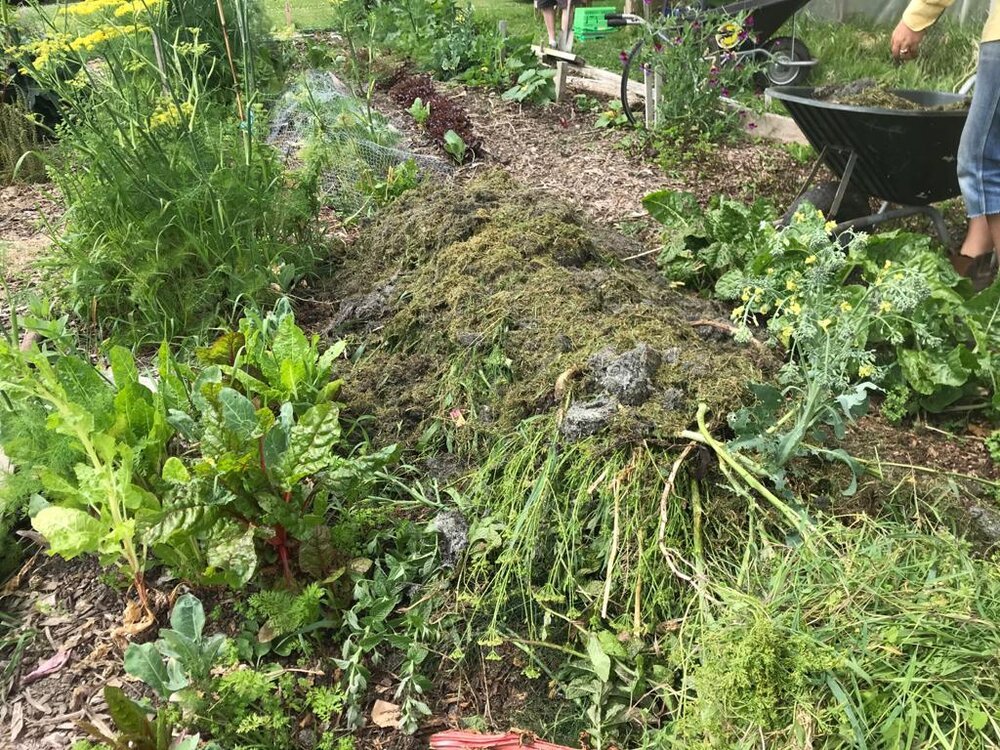Chop, drop and roll
Towards the end of the summer, and up until now we have been chipping away at preparing our garden beds for winter planting.
This has involved a fair amount of ‘chopping and dropping’ summer crops and ‘rolling’ out the tarp to lock in our much needed carbon and to get any pesky weeds under control.
So what does it mean to chop-and-drop you say?
It is basically what it sounds.
Chop or cut plant material at soil level, leaving the roots in the ground and drop the plants to the soil surface to create a mulch.
Just like in nature, when dead material falls to the ground, not only does this help reduce any water/moisture loss but the roots stay intact and then rot - enriching the soil structure and opening up air and water channels to enable water to filter down.
It’s a great way to not have to haul plants to your compost bin each time you clear a bed - saving time and energy!
So far the main crops who have succumbed to chop-and drop mulch have been brassicas i.e. your cabbage, kale, broccoli. These are generally more dense looking and require being cut into smaller pieces with garden shears to speed up the breakdown process.
Fennel is also accustomed to being chopped and dropped
Fennel is also accustomed to being chopped and dropped
Adding extra microbes in the form of ‘worm juice’ or our SPICE mix have also been helpful to breakdown plant matter faster.
The next step is to cover the chop-and-drop mulch mound with a tarp.
We use thick black plastic tarps or vinyl billboard skins so that the beds stay warm and moist, and to ensure the wind doesn’t undo all our hard work! We also regard it as a time saving approach to knock back weeds and help prepare the soil for planting.
While the tarp creates a warm and moist environment for weeds to germinate, weeds require sunlight to grow that they end up dying off under a tarp that blocks out sunlight.
Mounds covered in thick black plastic have been popping up more frequently at Riverside
If the weeds have gotten away on you, most weeds can be chopped and dropped and then tarped, provided they haven’t gone to seed. Exceptions include bindweed (convolvulus) and couch (quackgrass) - these are just nasty and need to be dealt with separately.
Couch grass drying on top of the tarp
Normally it takes around 2-3 weeks in the summer/early autumn for weeds to be suppressed under a tarp. If you intend on leaving the tarp for a few months over the winter period for instance, laying cardboard, compost and grass clippings underneath the tarp is a great way to condition the soil.
Another trick to suppress weeds and add more carbon to our soils, is adding wood chip mulch after creating path trenches (10 cm deep/ 40 cm wide) next to your beds. Over time the wood chip will turn into lovely carbon rich soil. If you’re passing by the ReMakery, be on the look-out for free mulch. Always plenty to go around.




